How do you make ancient civilizations feel alive for students? If you’re Patricia, a Grade 7 teacher, you hand over the reins—and the dice—and let students design their very own board games!
In this interview, Patricia shares the story behind a project that mixed history, creativity, teamwork, and a little bit of chaos (the good kind). Read on for the inspiration, the learning, and a few proud teacher moments. 🥹
🎤 Can you describe the goal of this project and what inspired it?
The goal was for students to explore and understand the key elements of an ancient civilization, then express that learning by designing a board game rooted in their research. I wanted something beyond just writing or presenting—it needed to be interactive, creative, and student-driven.
Originally, the project was going to be something more like a Dungeons & Dragons-style experience, with focuses on character development, but it evolved into board game design. That shift actually worked really well. Students became immersed in the cultures they chose, and they were motivated to create something others could play and enjoy. I liked that it gave them ownership over their learning and allowed them to be inventive with how they represented what they knew.
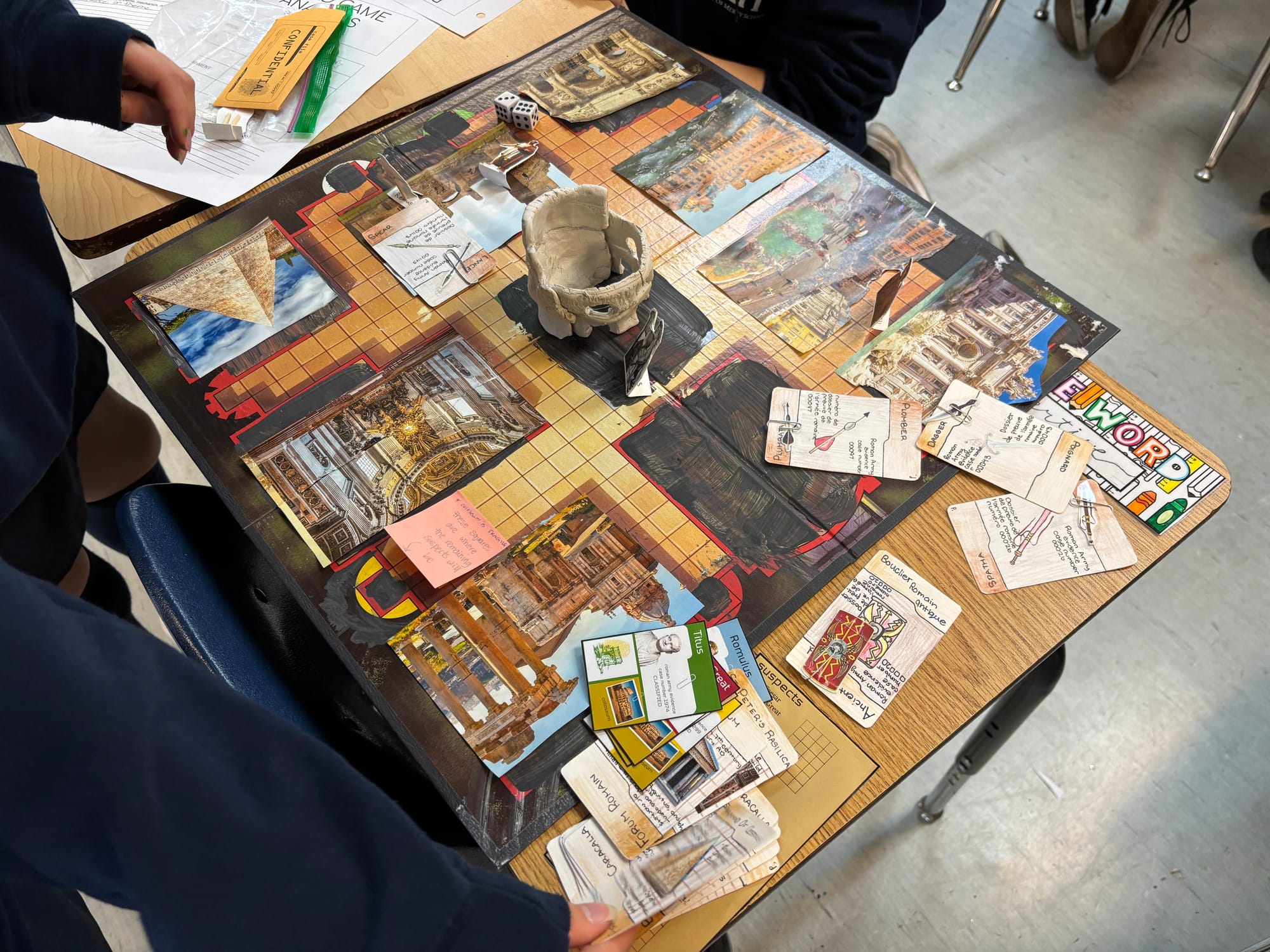
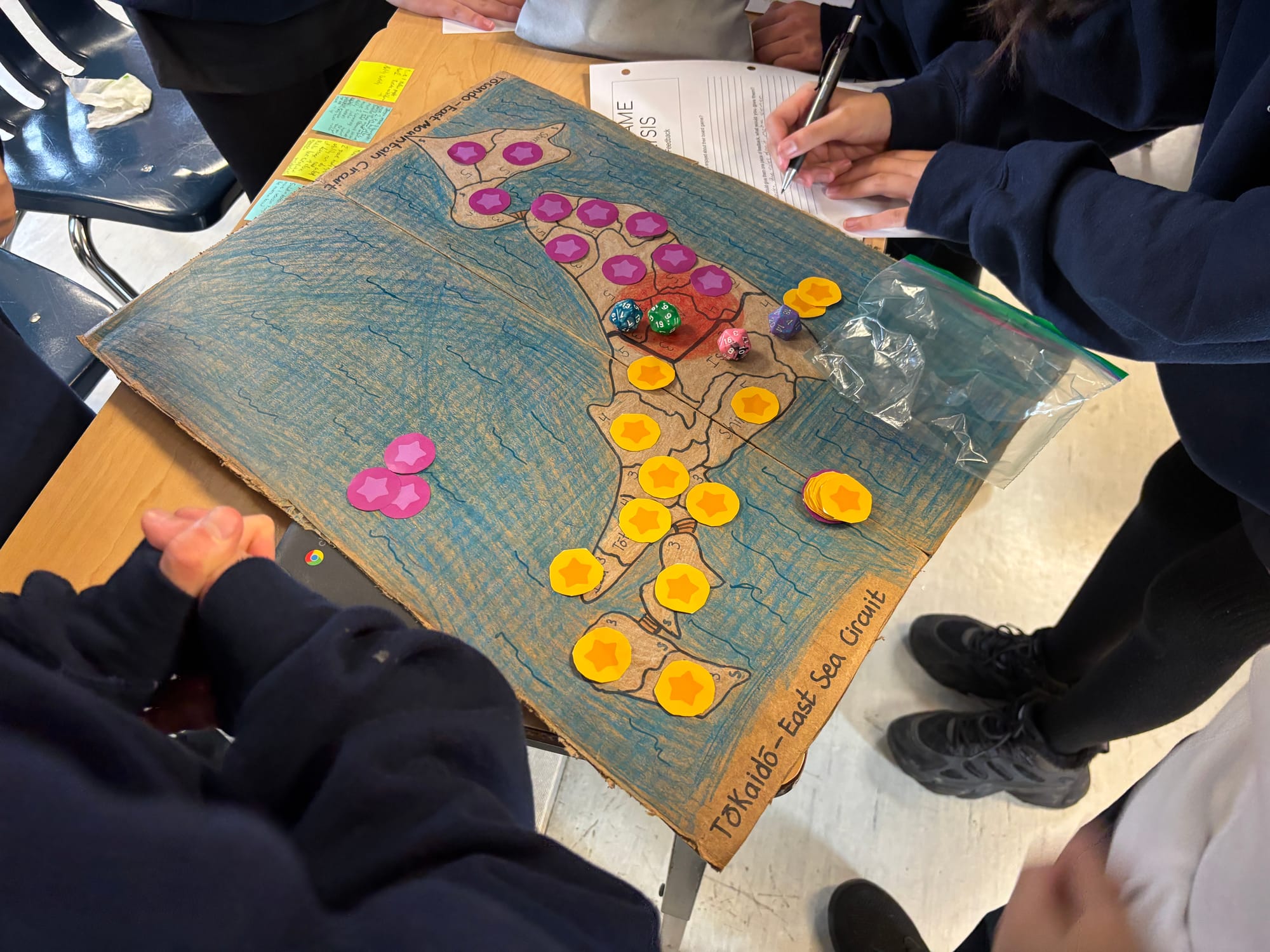
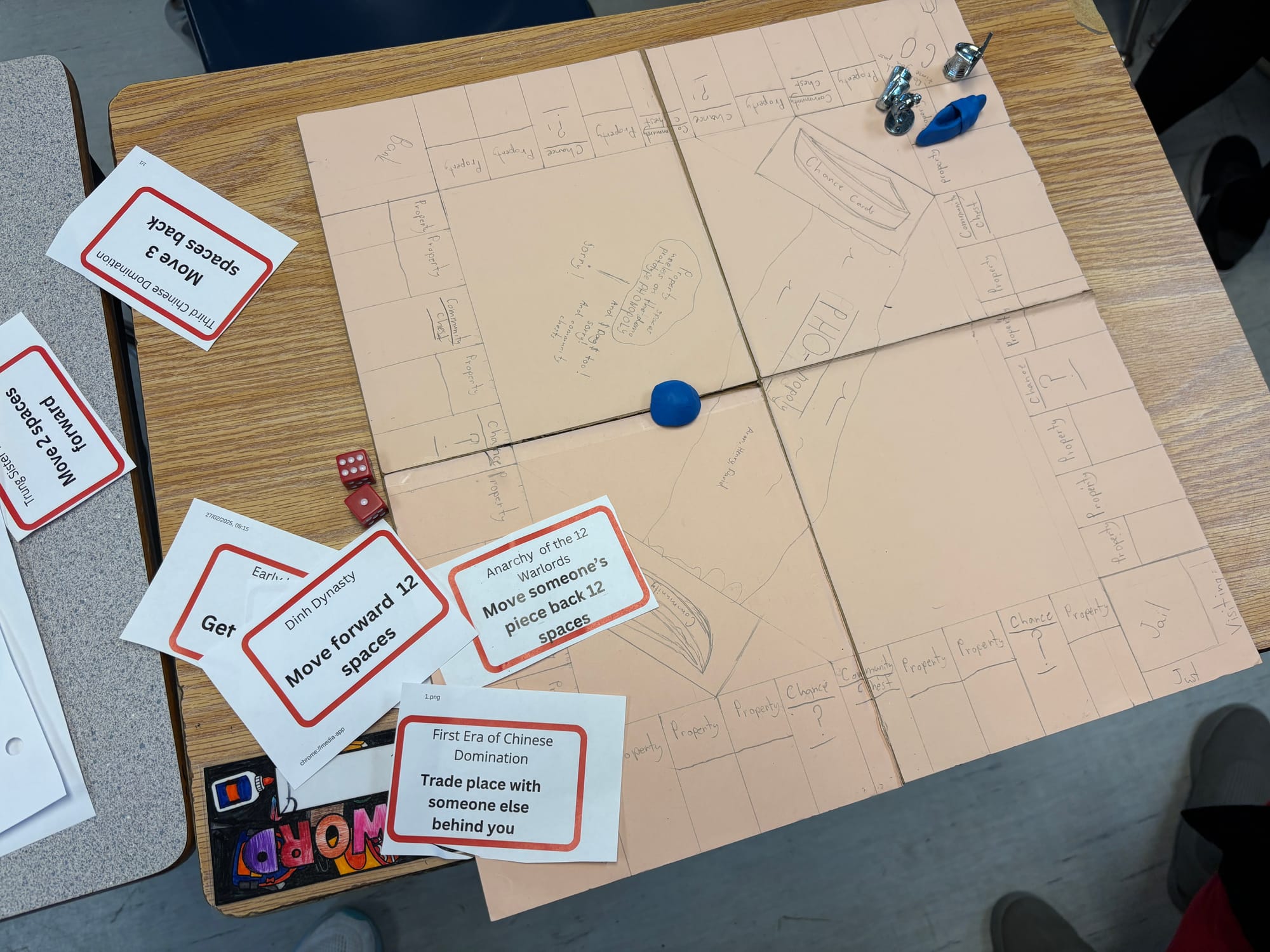
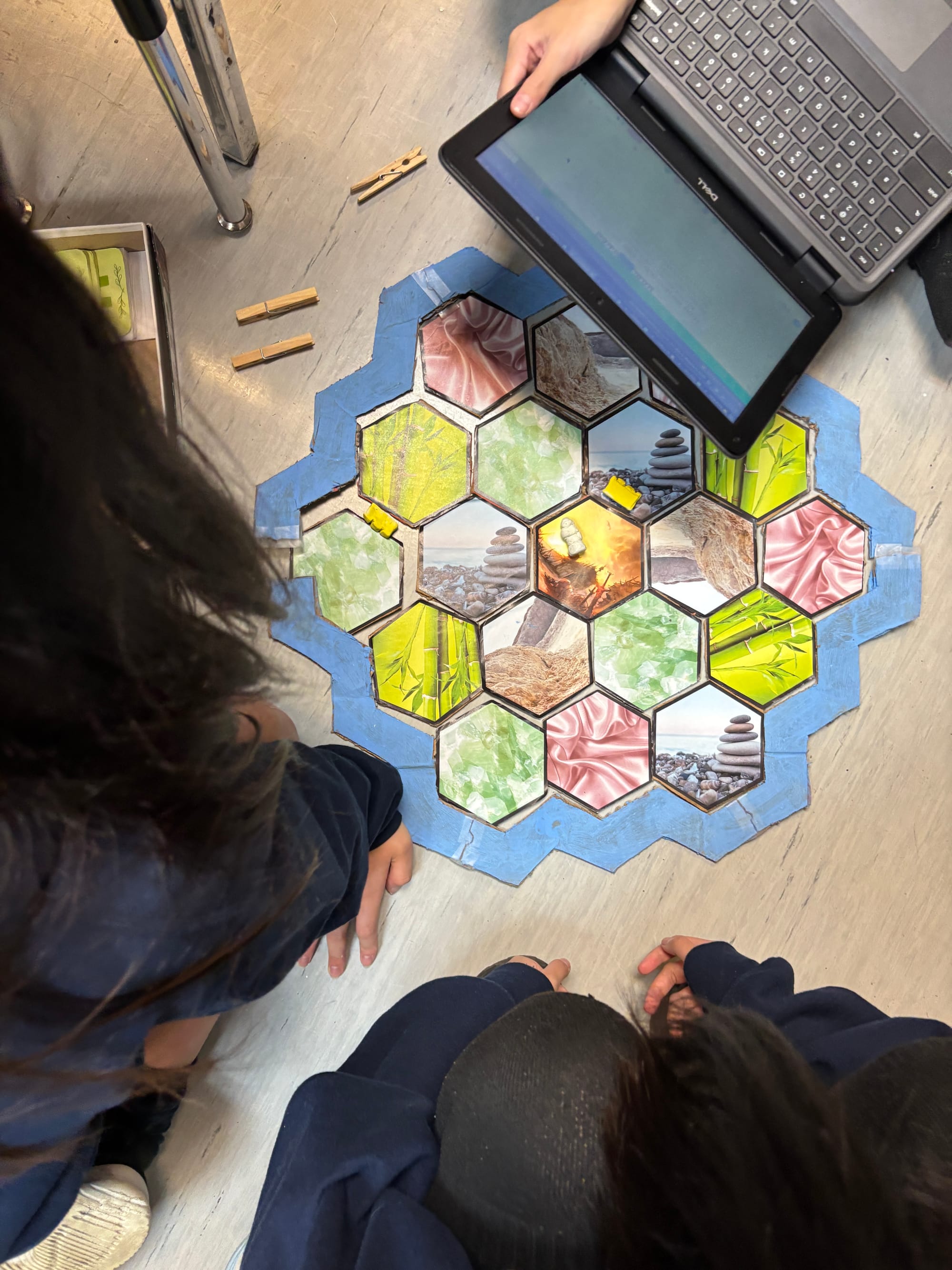
Students were inspired by games like Monopoly, Settlers of Catan, and Clue or chose to design their own game rules from scratch.
🎤 What skills are students developing while creating their board games?
There were so many, but collaboration was probably the biggest one. Students had to navigate group work in real, often challenging ways. They learned how to divide up responsibilities, problem-solve together, and give each other feedback—sometimes even tough feedback. Some students discovered that they couldn’t rely on just one or two people to carry the project and that consistent communication mattered.
There were moments where groups had to address participation issues or conflict, and it taught them a lot about teamwork. On top of that, they built skills in planning, organization, creative design, research, and iteration. They also practiced perseverance—especially when something didn’t work and they had to troubleshoot or scrap it and try again. Honestly, they grew so much over the course of the project.
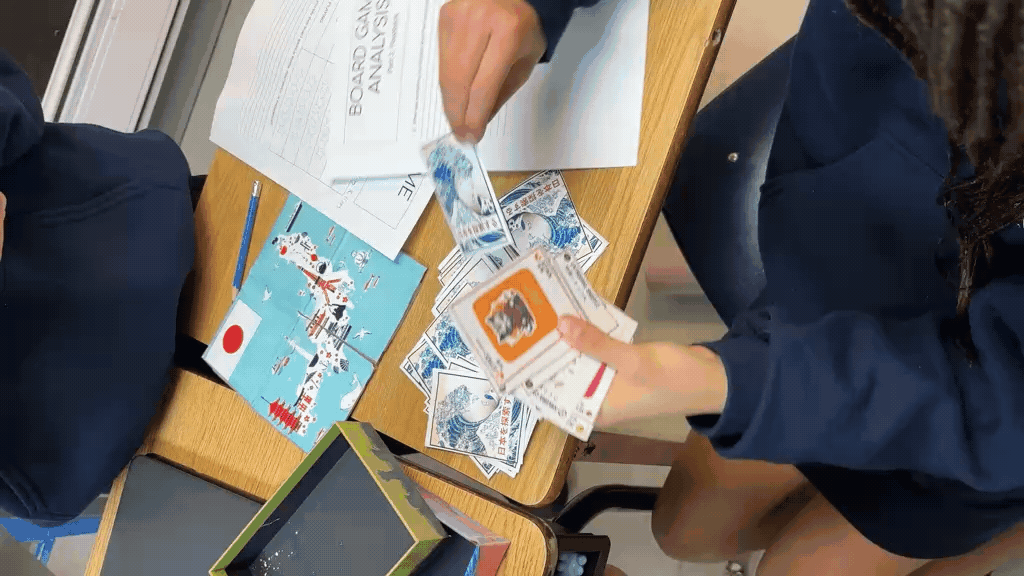
🎤 What’s one moment that made you really proud during this process?
There were a few, but one that really stuck with me was seeing the Seesaw reflections students posted partway through the project. I could see how far they'd come. One group that made an Ancient Rome Clue-inspired game had spent weeks problem-solving how to make their pieces stand up, and they even built a 3D Colosseum centerpiece. They tried multiple materials—clay, cardboard, foam—before landing on something that finally worked. That kind of persistence and creative thinking was amazing to see.
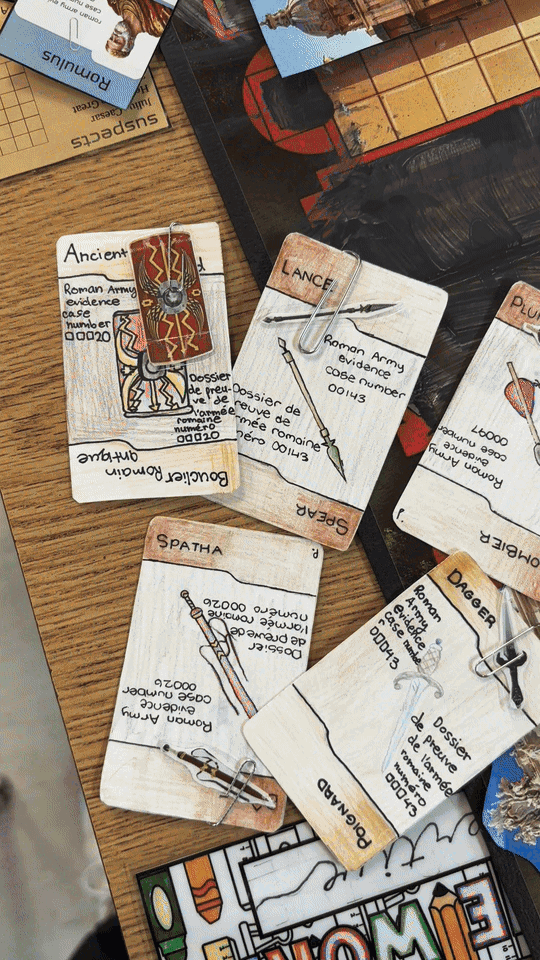
“The biggest challenge during this project was making my board game less simple. Before we added the special cards, our game lacked complexity and challenge. We solved it by incorporating ancient Egyptian gods into our game, which resulted in the cards!”
Another proud moment was during the Student Led conferences when parents got to see and actually play the games. Several of them said things like, “I wish we had done something like this in school,” or “This is so cool, we play Catan as a family all the time!” (in reference to their child’s project where they designed their own version of Catan around Ancient China) That meant a lot—it was external validation that the project mattered, and that parents don’t think the only way for their kids to learn is through essays and tests. It also showed students that their work was meaningful and appreciated beyond just the classroom.
🎤 How do board game design and play connect to the broader curriculum?
There’s a strong connection to Social Studies content, of course. Students had to understand the culture, geography, religion, hierarchy, and daily life of their civilization in order to build a game that reflected those elements. But there’s also a big link to curricular competencies—especially communication and critical thinking. Students had to articulate their ideas, explain their rules clearly, and justify how the content connected to their game mechanics.
“... I learned that making the rules was actually harder than making the board. The board just takes lots of time to colour and draw. The rules will take some time too because the game has to make sense and things have to be logical and understandable.”
We also saw how much instructional writing matters. Writing clear, easy-to-follow game instructions was a challenge, and some students realized how difficult it is to explain something in writing so that others understand it. In the future, I’d love to connect this more directly to English Language Arts by explicitly teaching instructional writing as a unit leading up to this project. It would give them a stronger foundation going into something like this.

🎤 Why do you think hands-on, creative projects like this are valuable in the classroom?
These kinds of projects give students a chance to apply what they’ve learned in authentic, personal ways. It’s not just about memorizing facts—it’s about using those facts to build something, to tell a story, to solve a problem. They take ownership of their learning. They also develop resilience and resourcefulness. For example, we didn’t have unlimited materials—so students had to think critically about how to use what they had. They learned to adapt, to make compromises, to prototype and refine.
I also saw students recognize their own strengths—whether it was leading their group, designing beautiful components, writing engaging game cards, or thinking through gameplay mechanics. And they saw their classmates’ strengths too, which created a lot of mutual respect. It was real-world learning, and it was fun.
“I loved working with my team because they were able to help me divide the overall work. I enjoyed working with classmates because it made me interact with them more than usual.”
🎤 What do you hope students take away from this experience, beyond the final game?
I hope they come away with a deeper curiosity and appreciation for the civilization they explored—and in some cases, they really did! A few students even said they wanted to travel to the countries they studied one day, which is amazing.
But beyond that, I hope they feel proud of themselves. They created something from scratch—something complex, thoughtful, and playable. That’s no small thing. I want them to walk away with confidence in their ability to work through challenges, collaborate with others, and push through when something doesn’t go perfectly. Some groups had to restart or rework major parts of their game, and they learned that it’s okay if things aren’t perfect the first time around. That mindset—of learning from mistakes and persevering—is one of the most valuable things they can carry forward.
Also, they learned how to manage time, and recognize when to stop revising and just move forward. It’s all part of being a learner, and I think they really grew in that way. I’m so proud of what they created, and I think they’re proud of it too.
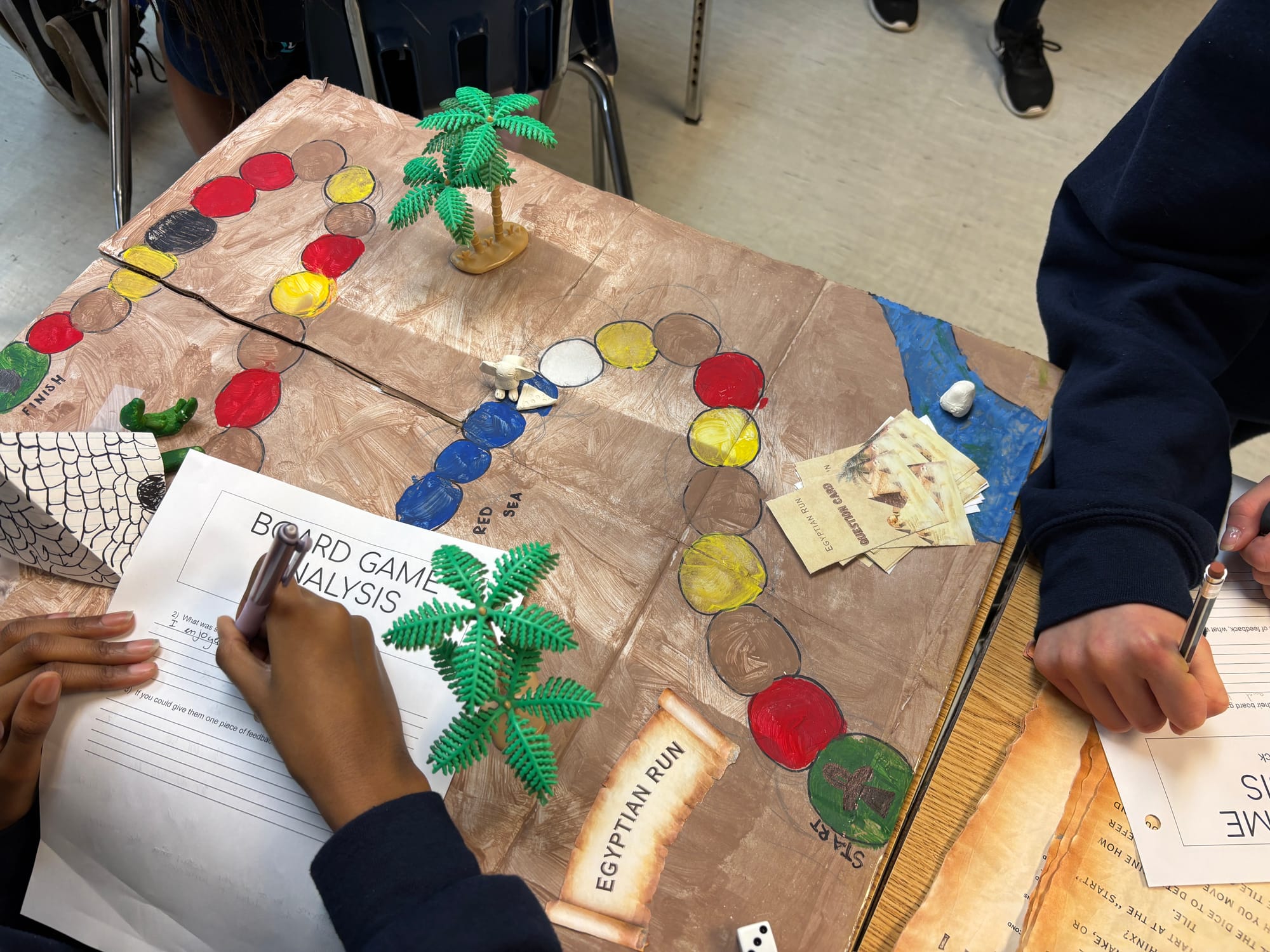
“... I would say that try to add as many details into the prototype because adding last minute changes are really hard to do.”
“Don’t try to be lazy just so you don’t have to work; trust me, the effort will be worth it.”
Capturing Magic 🎩
When students are given the space to create, problem-solve, and collaborate, magic happens—and Patricia’s Ancient Civilization Board Game project is proof. Beyond just learning about history, students built confidence, resilience, and a few pretty epic masterpieces along the way.


It Teaches Theory of Mind
Want more reasons to do this in your class? We love this article from Alistair Croll.

When you’re designing a game, you have to think about how others will behave. This is a great way for children to develop a theory of mind—and then try it out. Often, kids assume that everyone will do things the way they do. They believe that if they understand something, it will be obvious to others. (I think that) the sooner they realize this is not the case, the more clearly they’ll communicate and the more readily they’ll develop empathy.
What are you waiting for?




